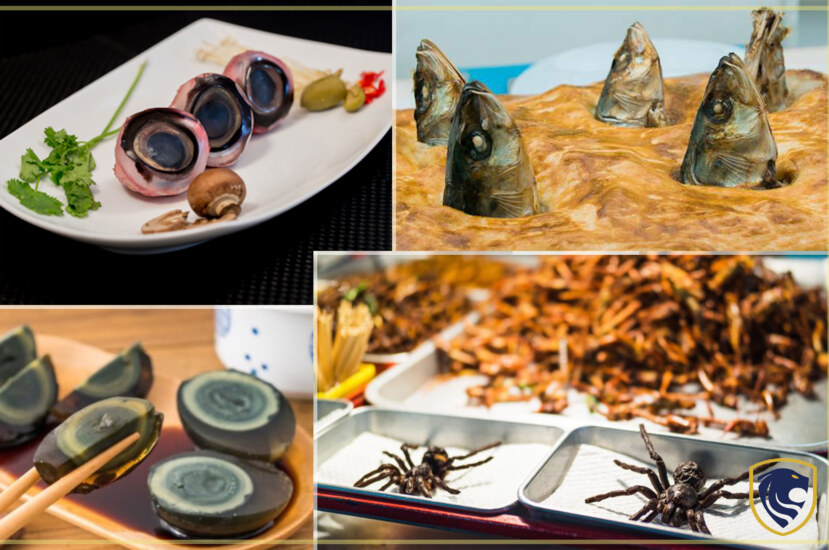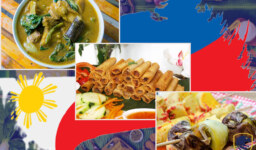When talking about food, all the foodies just like you and me, we love trying cuisines from different countries. Most of the countries have their own styles of cooking with unique ingredients. Food plays a major part of a country’s culture. Sometimes the name of the country pops out in our head in the moment we heard the name of the food. As an instance, whenever we see a nice dish of pasta, we know that it has originated in Italy. Moreover, whenever we see tacos we know that it is from Mexico. Whenever we think about India, we feel the aroma of spicy curries. Just like that, some food is defining the country’s identity.
But as different countries have different cuisines, a food that is considered delicious by the locals can appear strange to a foreigner. When it comes to our obsession with odd cuisine, there is definitely nothing abnormal about it. The Disgusting Food Museum, located in the Swedish city of Malmö, highlights our preoccupation with strange food. So, today we are going to explore most unusual food from different parts of the world.
Shirako, Japan
Shirako, often written shiraku, is arguably the strangest food in Japan. This euphemism is a diamond among euphemisms: Shirako, a Japanese word, refers to “white kids.” This white mixture, which may at first glance resemble mayonnaise, is actually fish semen. This delicacy, which may be put on top of custard, on top of rice, or even cooked in tempura batter, is praised for its mild sea flavor and rich, velvety texture. The sperm sacs of either cod, angler fish, or puffer fish are the delicacy to which it refers.
Tuna eyeballs, Japan
Today, tuna eyeballs are typically found at Japan’s izakayas, which are informal, after-work taverns that serve food and beverages. One or two cooked eyes are offered at a time, along with other foods. The meaty, tennis ball-sized eyes are prepared by apanese caterers as bar snacks or appetizers. The lens, iris, and gelatinous fluid are all contained within the eye’s hard sclera surface. The inner eye becomes soft and may be readily removed like bone marrow when cooked, but the sclera is typically too chewy to consume. Eyeballs are frequently delicately braised in soy sauce and mirin or sautéed in sesame oil and ginger by chefs. Most tasters compare the eyes to hard-boiled eggs, squid, or mussels because they are fairly bland itself.

Shirako, Japan, Tuna eyeballs, Japan, White ant eggs soup, Laos
White ant eggs soup, Laos
A traditional Laotian meal called “ant egg soup” combines ant eggs with snakehead fish, garlic, galangal, and lemongrass. Lime juice, basil, tomatoes, tamarind beans, and fish stock. It is also the name of a book written by food traveler Natacha Du Pont De Bie about her experience foraging for food in Laos. The people she met, the locations she visited, and of course the meals she enjoyed are all detailed in the book.
Balut, the Philippines
In Asia, producing and consuming fertilized duck eggs is a common custom. This famous Pilipino dish is produced by incubating duck eggs for around 18 days. However, the development of the Philippine balut business faces obstacles from detractors of its veracity and from the erratic market demand for balut.
Its name derives from the traditional preparation method; “balut” simply means “wrapped” or “covered” while it is incubating. The embryo of the ideal balut, which is still partially formed and covered in a yellowish coat, is incubated for 17 to 18 days. Locally, this is referred to as “balut sa puti,” which is Filipino for “wrapped in white.”
Fried tarantulas, Cambodia
It’s unlikely that anyone would see a tarantula and think, “Lunch,”. Therefore it may not come as a surprise that the first humans to consume these spiders were starving Cambodians living under the Khmer Rouge government. Strangely, deep-fried spiders have gained popularity in Cambodia and are now offered as a snack all across the nation. They appear to taste something like crab.

Balut, the Philippines, Fried tarantulas, Cambodia, century eggs
Jellied moose nose, Canada
Moose meat is a common food for people in Alaska and the far north of Canada. In these regions, moose meat is consumed as pizza topping, steaks, and sausages. Jellied moose nose is still a unique delicacy made from moose.
The bulb of a moose’s nose contains both white flesh and black meat (from around the bones). Prior to cooking. The nose is then cut in half and simmered with onions, garlic, and a variety of additional spices, such as mustard seeds, allspice, cinnamon, and cloves. It’s possible to include meat from the lips and ears in addition to the head’s other organs. After the mixture has cooled, the cook arranges the beef pieces in a loaf pan, covers them with broth, and chills the mixture so the meat will be tender.
Century egg, China
This is a dish full of eggs. But the unusual thing about these eggs id that, these duck, chicken, or quail eggs are preserved for a few weeks to several months in a mixture of clay, ash, salt, quicklime, and rice hulls to create century eggs, another name for preserved eggs. Basically this is a rotten egg.
The yolk of the egg is composed of merging rings of soft green, yellow, and gray, and the center is soft, dark, and seeping. The egg’s “white” ranges from golden amber to an extraordinary transparent black. People who are unfamiliar with this cusine may be reluctant to try these preserved eggs because of their peculiar coloring and odor, which they may detect with terrified interest.
Stargazey Pie, England
Pies come in all shapes and sizes in England, from traditional favorites like apple pie and pork pie to less well-known dishes like steak and ale pie or pot pies.
But when it comes to wow factor, none of these pastries can match the well-known Stargazy Pie. No matter how artistically designed your pie is, nothing beats half a dozen cooked sardine heads poking out from the flaky crust and gazing upward.
Casu marzu, Italy
The maggot-infested cheese casu marzu, which the Guinness World Records named the most deadly cheese in the world in 2009. It is produced by shepherds along these jagged curves.
Piophila casei, the cheese skipper fly, often lays its eggs in fiore sardo, the salty pecorino of the island.
When maggots hatch, they move through the paste. They eat the proteins as they go and turning the mixture into a soft, creamy cheese.
The cheesemonger then uses a cracker to open the top, which is nearly completely free of maggots, in order to remove a spoonful of the creamy delicacy.

Stargazey Pie, England, Casu marzu, Italy, Locusts dish, Israel
Locusts dish, Israel
Most people wouldn’t anticipate seeing a jar of locusts in a restaurant’s kitchen. But it’s the key ingredient of a brand-new meal that chef Moshe Basson developed in Jerusalem. Apparently, deep-fried, chocolate-covered locusts are a huge hit. Insects and bugs were formerly considered by many to be some of the strangest meals in the world,. But they have recently had a sort of comeback. Don’t be shocked to see them on more and more restaurants throughout the world.
Legend has it that this valiant sailor from the sixteenth century, storms one December evening to row out and bring in a catch large enough to feed the starving locals. It’s crucial to preserve the fish heads since they protrude from the pie and give it its moniker, which is at least pleasantly evocative. Delightful.




